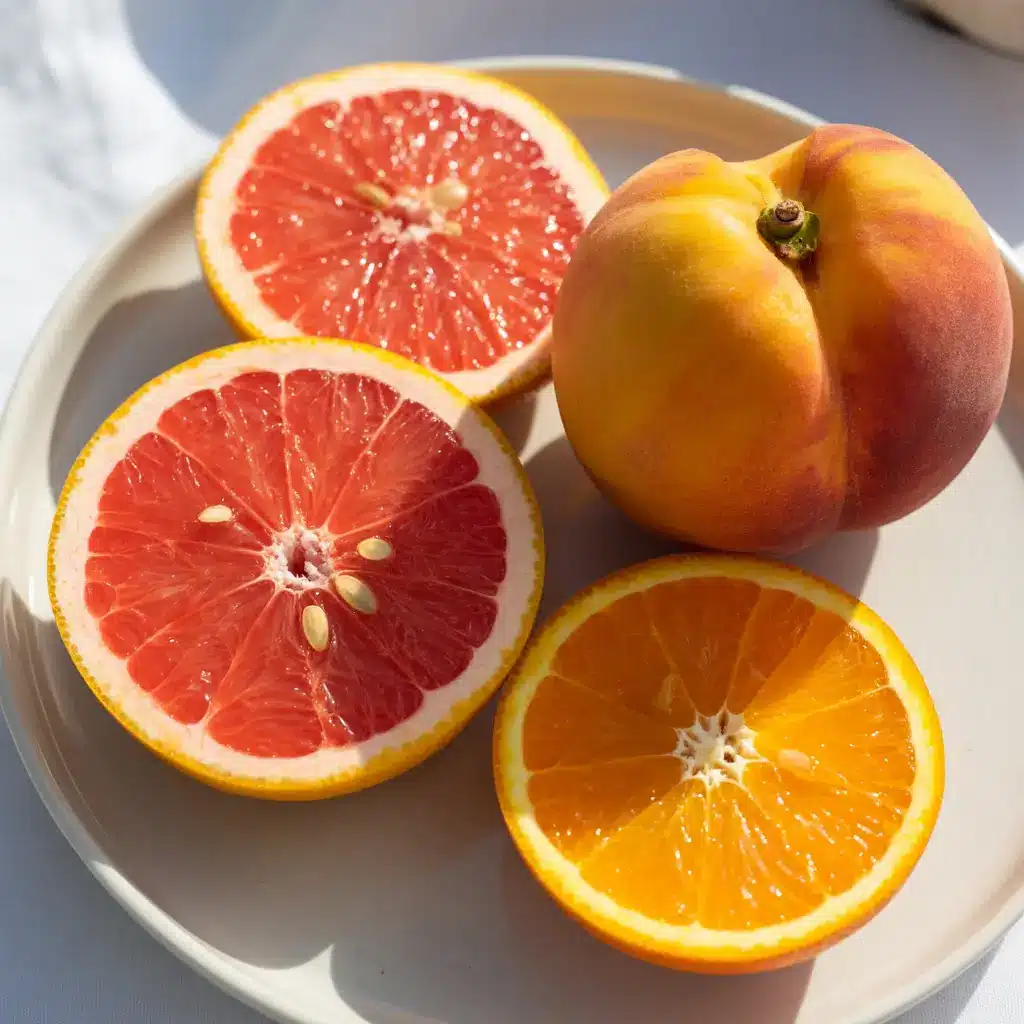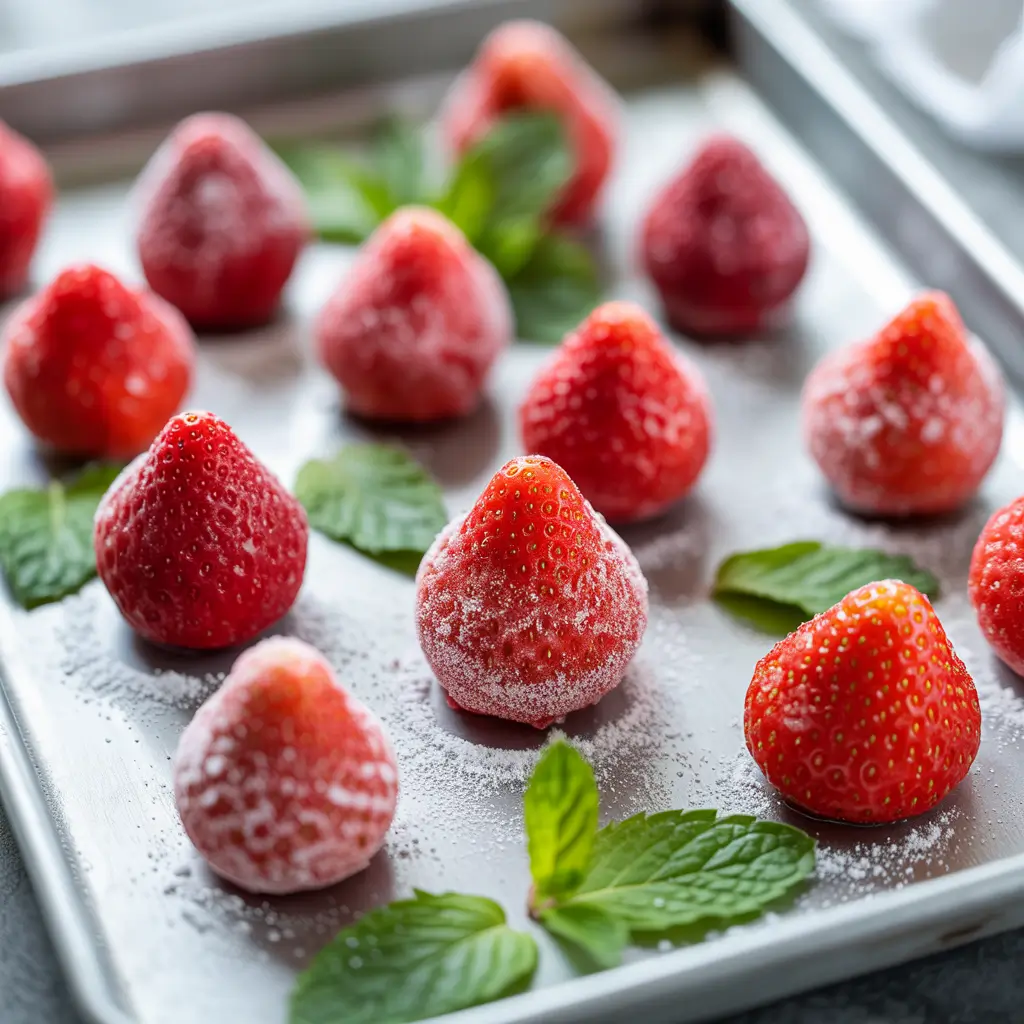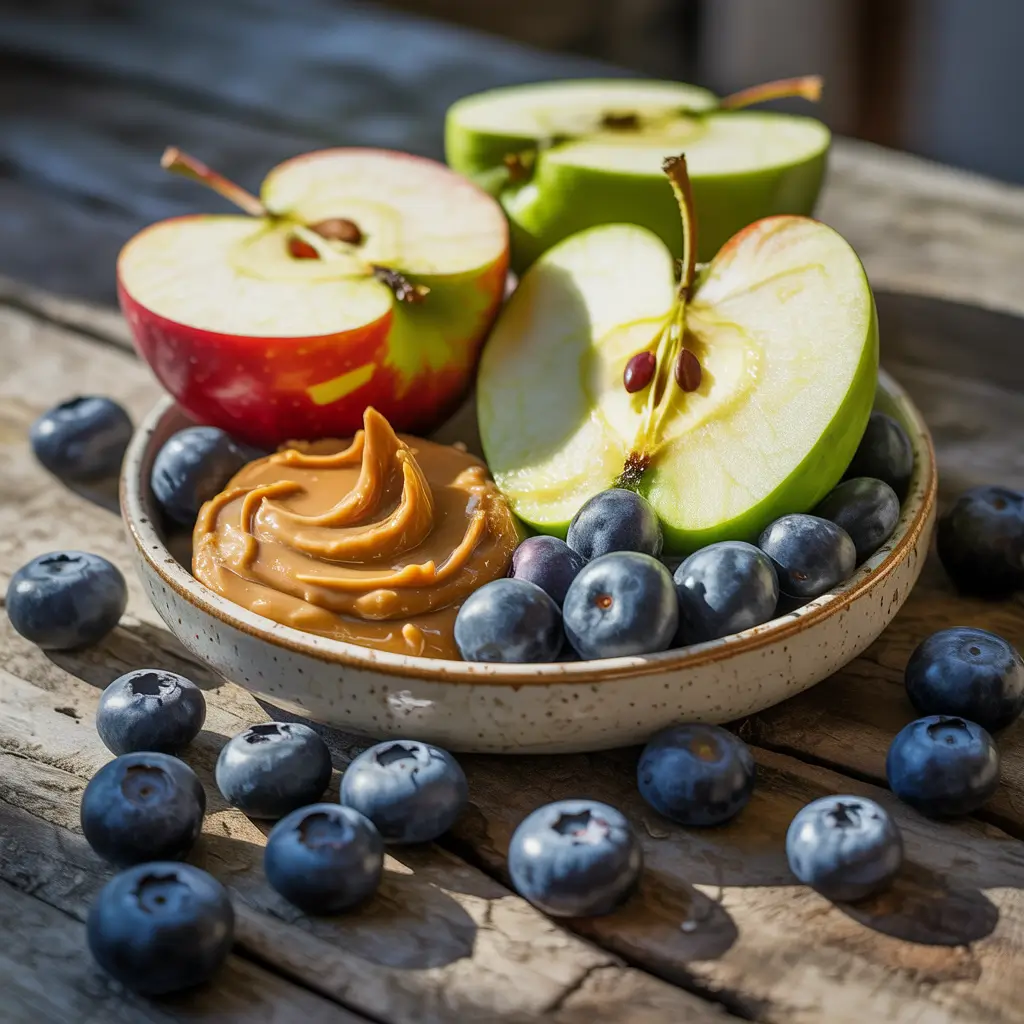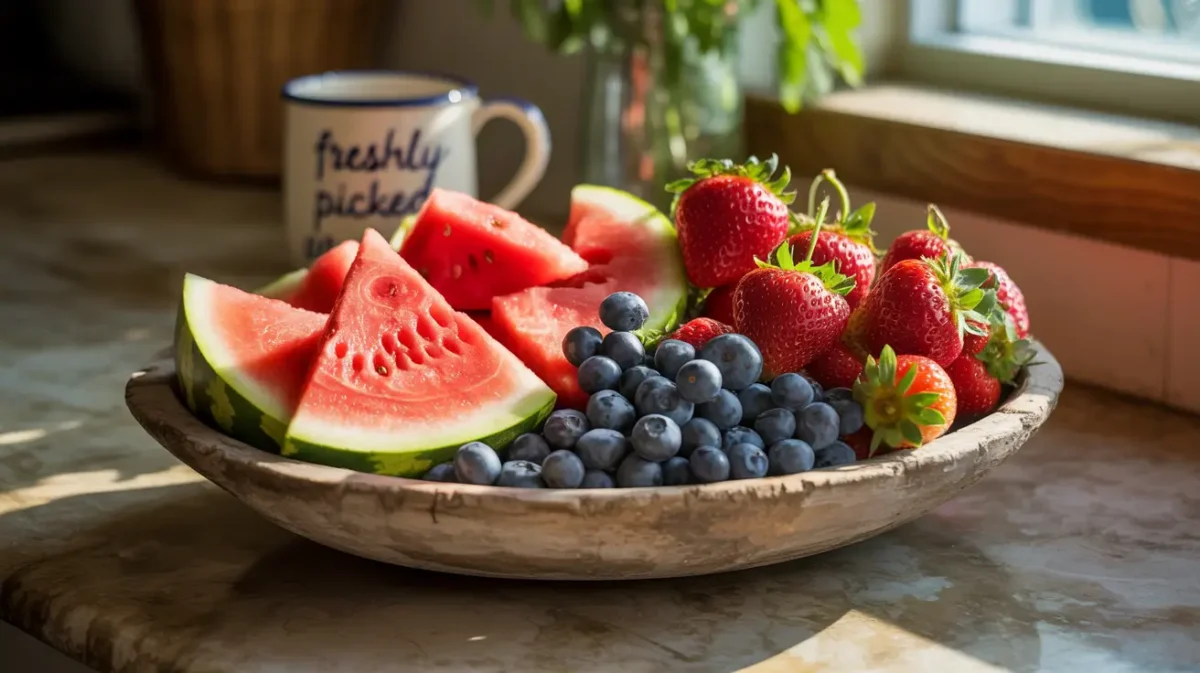Foreword
Healthy eating doesn’t have to feel restrictive, and that’s exactly why I love exploring the lowest calorie fruit snacks. Over time, I’ve learned that swapping processed foods for naturally sweet fruits can transform both energy levels and weight control.
This article is designed to do more than list fruits—it will show you how to make them part of your daily routine with simple ideas anyone can follow. If you’d like even more guilt-free snack inspiration, check out our creami recipes for weight loss.
I’ll also highlight expert insights from High Tasty, so you can see how mindful snacking supports long-term health. Let’s dive in and discover how fruit can be both delicious and low in calories.
table of contents
Table of Contents
Lowest Calorie Fruit Snacks: The Ultimate Guide to Guilt-Free Snacking
Naturally sweet, hydrating, and perfect for weight management—these lowest calorie fruit snacks will help you satisfy cravings and stay on track.
- Prep Time: 10 minutes
- Cook Time: 0 minutes
- Total Time: 10 minutes
- Yield: 4 servings
- Category: Snack
- Method: No-Cook
- Cuisine: Healthy
- Diet: Vegan
Ingredients
- Watermelon – 30 calories per 100g
- Strawberries – 32 calories per 100g
- Cantaloupe – 34 calories per 100g
- Grapefruit – 42 calories per 100g
- Peaches – 39 calories per 100g
- Oranges – 47 calories per 100g
- Apples – 52 calories per 100g
- Blueberries – 57 calories per 100g
- Plums – 46 calories per 100g
- Papaya – 43 calories per 100g
Instructions
- Choose any fruit from the low-calorie list for a satisfying snack.
- Slice watermelon, strawberries, or grapes and freeze them for bite-sized summer treats.
- Blend fruits like mango or pineapple and freeze in ice cube trays for smoothie boosters or fruit-flavored drinks.
- Create a fruit salad with watermelon, strawberries, and cantaloupe for a snack under 100 calories.
- Add lemon juice or mint to enhance flavor without adding calories.
- For crunchy snacks, dehydrate apple or peach slices in the oven or dehydrator until crisp.
- Store your fruit chips in airtight containers for grab-and-go convenience.
- Pair fruit snacks with Greek yogurt or nut butter for protein-rich combinations.
- Pre-portion fruit into bowls or snack bags to prevent overeating.
- Read store-bought fruit snack labels carefully—avoid added sugars and stick to options with just fruit.
Notes
For best results, choose fresh, in-season fruits and avoid packaged snacks with added sugar or preservatives.
Introduction to Lowest Calorie Fruit Snacks
Lowest calorie fruit snacks are the perfect solution for anyone craving something sweet while keeping calories under control. These naturally healthy treats deliver flavor, fiber, and hydration without piling on excess sugar or fat, making them ideal for weight loss or a balanced lifestyle. Unlike processed snack foods, fruit-based snacks are loaded with vitamins, minerals, and antioxidants that your body needs every day.
From fresh fruit bowls to frozen bites and dehydrated chips, fruit snacks are versatile, refreshing, and satisfying. They can be enjoyed as a quick mid-morning pick-me-up, a light evening bite, or even a smart post-workout option. If you’re curious about creative ways to enjoy fruit, don’t miss our healthy fruit snacks recipes, where you’ll discover delicious ideas you can make in minutes.
In this article, we’ll explore which fruits are lowest in calories, the health benefits they provide, how to prepare them at home, and even the best store-bought options. By the end, you’ll know exactly how to use these low-calorie snacks to satisfy cravings while staying on track with your health goals.
What Are the Lowest Calorie Fruit Snacks?

Defining “Low Calorie” in Fruit-Based Snacks
When we talk about the lowest calorie fruit snacks, it’s not just about picking any fruit—it’s about finding options that give you the most satisfaction for the fewest calories. Generally, fruits that are high in water content and fiber tend to be the lowest in calories. These snacks fill you up without adding excess energy, making them excellent choices for anyone aiming to lose weight or maintain a healthy balance.
Low-calorie fruit snacks are versatile, too. You can enjoy them fresh, chilled, frozen, or even lightly dehydrated for on-the-go convenience. Because they’re naturally sweet, they’re also a great alternative to processed candies or packaged snacks that often come loaded with refined sugars and empty calories. For a more creative twist, check out our frozen fruits snacks guide, which shows how to turn everyday fruit into refreshing, low-calorie treats.
Quick List of the Top 10 Lowest Calorie Fruit Snacks
Here’s a simple breakdown of fruits that rank among the best choices for low-calorie snacking:
| Fruit | Calories per 100g | Why It’s Great |
|---|---|---|
| Watermelon | 30 | Hydrating, refreshing, high water content |
| Strawberries | 32 | Packed with vitamin C and antioxidants |
| Cantaloupe | 34 | Sweet yet light, excellent for hydration |
| Grapefruit | 42 | Supports metabolism and fat burning |
| Peaches | 39 | Juicy, satisfying, naturally sweet |
| Oranges | 47 | Boosts immunity, high in vitamin C |
| Apples | 52 | Filling, portable, rich in fiber |
| Blueberries | 57 | Antioxidant powerhouse |
| Plums | 46 | Juicy, slightly tart, aids digestion |
| Papaya | 43 | Enzyme-rich, supports gut health |
Nutritionists at High Tasty also highlight that water-rich fruits like melon and citrus can be especially effective for weight management because they combine hydration with very low calorie density.
By prioritizing these options, you’ll always have a reliable, low-calorie choice ready to satisfy cravings.
Health Benefits of Low-Calorie Fruit Snacks
Nutritional Value Beyond Calories
Choosing the lowest calorie fruit snacks isn’t just about saving calories—it’s about nourishing your body. Many of these fruits are loaded with vitamins, minerals, and antioxidants that support overall health. For example, strawberries and oranges deliver powerful doses of vitamin C, which boosts immunity and helps your body absorb iron. Blueberries and plums are antioxidant-rich, protecting your cells from damage and supporting long-term wellness.
Another major benefit is fiber. Fiber slows digestion, stabilizes blood sugar, and makes you feel full longer, which can reduce cravings for unhealthy snacks. Fruits like apples and pears, though slightly higher in calories than watermelon, offer a satisfying crunch that keeps you fuller between meals.
How They Support Weight Loss and Satiety
Low-calorie fruits also shine when it comes to weight management. Most of them have a high water content—think watermelon, cantaloupe, and grapefruit. This means you can eat generous portions without overloading on calories. That’s why they’re excellent pre-meal snacks: they take the edge off your hunger so you naturally eat less during your main course.
Pairing fruit with protein can also amplify the effect. A serving of berries with Greek yogurt or sliced apple with almond butter provides balance, keeping energy levels steady. If you want creative ways to blend fruits into your daily meals, don’t miss our hand-held snack with dried fruit, which combines taste and nutrition in a convenient form.
According to High Tasty, integrating fruit snacks into your daily diet helps reduce reliance on ultra-processed foods, a key factor in long-term weight management.
Detailed Breakdown of Popular Low-Calorie Fruits
Watermelon, Strawberries, and Cantaloupe
Some of the most refreshing lowest calorie fruit snacks are also the most hydrating. Watermelon contains only about 30 calories per 100 grams and is over 90% water, making it perfect for hot days or post-workout recovery. Strawberries, at just 32 calories per 100 grams, provide a sweet yet tangy option rich in vitamin C and antioxidants. Cantaloupe is another excellent choice, delivering hydration, fiber, and beta-carotene with only 34 calories per 100 grams.
Grapefruit, Peaches, and Oranges
If you’re looking for fruits that satisfy cravings while boosting metabolism, grapefruit is a standout. With just 42 calories per 100 grams, studies suggest it may help regulate insulin levels and support fat loss. Peaches, at 39 calories, are juicy, naturally sweet, and satisfying without being heavy. Oranges provide around 47 calories per 100 grams and are famous for their immune-boosting vitamin C. Their combination of sweetness and acidity makes them a great snack anytime.
Apples, Blueberries, and Plums
Apples, while slightly higher in calories at 52 per 100 grams, are packed with fiber, keeping you full longer. Blueberries (57 calories) are antioxidant-rich and support brain health, while plums (46 calories) offer digestive benefits thanks to their natural sorbitol content.
For more ways to incorporate fruit into your lifestyle, explore our watermelon flush diet, which highlights how this hydrating fruit supports weight management. According to High Tasty, making fruit your go-to snack can improve satiety and reduce dependence on processed foods.
Homemade Recipes for Lowest Calorie Fruit Snacks

Frozen Fruit Bites and Smoothie Cubes
One of the easiest ways to enjoy the lowest calorie fruit snacks is by freezing them. Slice bananas, strawberries, or grapes, place them on a baking sheet, and freeze until solid. These bite-sized snacks are refreshing, portion-controlled, and perfect for summer. Another option is to blend your favorite fruits—like watermelon, mango, or pineapple—pour the mixture into ice cube trays, and freeze. Drop these cubes into sparkling water for a low-calorie flavored drink or blend them into a smoothie for a refreshing snack.
Fruit Salad Variations Under 100 Calories
Fruit salads are simple yet customizable. A bowl of diced watermelon, strawberries, and cantaloupe can come in under 100 calories while still delivering sweetness and hydration. Add a squeeze of lemon or sprinkle of mint for extra flavor without adding calories. Mixing textures—like pairing crunchy apples with juicy peaches—creates a more satisfying bite.
Dehydrated Fruit Chips as Portable Snacks
If you’re looking for something crispy, try dehydrated fruit chips. Apples, peaches, and bananas work especially well. By using a dehydrator or even an oven at low heat, you can make crunchy snacks that travel easily and store for days.
For more inspiration, check out our healthy fruit snacks recipes, which feature creative, guilt-free options. According to High Tasty, making fruit snacks at home not only saves calories but also gives you full control over ingredients—no added sugars or preservatives.
Store-Bought Fruit Snacks: What to Choose and Avoid
Comparing Packaged Fruit Snacks vs Fresh Fruit
While fresh produce is always the best choice, sometimes convenience matters. Many store-bought fruit snacks claim to be healthy, but not all are created equal. Some contain added sugars, artificial colors, and preservatives that cancel out their nutritional value. Fresh fruit averages 30–60 calories per 100 grams, while packaged versions can double or triple that due to added sweeteners. If you want to stay within the lowest calorie fruit snacks category, look for options that list only fruit on the ingredient label.
How to Read Labels for Calories and Hidden Sugars
The key to making the right choice is reading nutrition labels carefully. Check the serving size, total calories, and especially the sugar content. A product labeled as “fruit snacks” might have more sugar than a candy bar if you’re not careful. Dried fruits like raisins and dates, though natural, are calorie-dense and best eaten in small portions. On the other hand, unsweetened dried apple chips or freeze-dried strawberries are lower-calorie options worth trying.
To help you choose wisely, don’t miss our guide to budget-friendly protein snacks, which pairs well with fruit for balanced nutrition. According to High Tasty, the smartest approach is to treat packaged snacks as occasional supplements, not replacements for fresh fruit.
By being mindful of labels and ingredients, you can enjoy the convenience of store-bought options without sacrificing your health goals.
FAQs on Lowest Calorie Fruit Snacks
What is the lowest calorie fruit snack?
The lowest calorie fruit snack is watermelon, which contains only 30 calories per 100 grams. Because it’s more than 90% water, it’s extremely hydrating and filling, making it ideal for weight-conscious diets (USDA FoodData Central). Frozen grapes and strawberries are also excellent low-calorie options.
Which snack is lowest in calories?
Among all natural snack options, fruits like watermelon, strawberries, and cantaloupe rank the lowest in calories per gram. Compared to processed snacks such as chips or granola bars, they provide fewer calories while still offering essential nutrients (CDC Healthy Eating).
Are fruit snacks good for losing weight?
Yes—fruit snacks can support weight loss when eaten in moderation. Their high fiber and water content help with satiety, meaning you feel full longer. Pairing fruits with protein, such as apple slices with nut butter, enhances this effect. For more creative ideas, explore our creami recipes for weight loss, which show how to blend fruit with protein for lasting satisfaction.
What are the healthiest fruit snacks?
The healthiest fruit snacks are those consumed fresh, frozen, or minimally processed without added sugar. Options like oranges, blueberries, and peaches provide vitamins, antioxidants, and fiber that support long-term wellness (Harvard T.H. Chan School of Public Health).
Expert Tips for Incorporating Fruit Snacks Into a Diet

Best Times to Eat Fruit Snacks for Weight Management
The timing of snacks can make a big difference. Eating the lowest calorie fruit snacks between meals helps control hunger and prevents overeating at lunch or dinner. Many experts recommend fruit as a mid-morning or mid-afternoon snack because it provides quick energy without the crash. After workouts, fruits like bananas or oranges replenish electrolytes and aid recovery.
Portion Control Strategies to Avoid Overeating
Even though fruits are low in calories, portion size still matters. It’s easy to eat three or four bananas at once and suddenly take in hundreds of calories. To avoid this, pre-portion your fruit into small bowls or bags. Keeping frozen grapes or apple slices ready makes it simple to grab the right serving without mindless snacking.
Combining Fruit Snacks with Protein for Balanced Nutrition
Pairing fruits with protein or healthy fats helps you stay fuller for longer. Apples with almond butter, strawberries with Greek yogurt, or peach slices with cottage cheese are examples of balanced snacks. This combination stabilizes blood sugar and keeps cravings under control.
For more practical snack strategies, don’t miss our high protein low fat dessert recipe
Conclusion: Making Smart Choices With Fruit Snacks
When it comes to healthy snacking, the lowest calorie fruit snacks offer the perfect balance of taste, nutrition, and calorie control. By choosing fruits like watermelon, strawberries, grapefruit, and blueberries, you can satisfy cravings without overloading on calories. These options are naturally sweet, hydrating, and packed with essential vitamins and antioxidants that support both weight management and overall health.
The key is consistency. Whether you enjoy fruit fresh, frozen, or lightly dehydrated, making it a daily habit will help you cut back on processed snacks that often sabotage your goals. Pairing fruits with protein or healthy fats further enhances satiety and keeps energy levels stable throughout the day. Simple strategies like portion control, pre-prepping snacks, and mixing fruit with other nutrient-dense foods can make healthy eating easier and more enjoyable.
If you’re looking to diversify your snacking options, check out our air fryer protein donut holes, a fun and balanced treat that pairs well with fruit. For additional insights, nutrition experts at High Tasty recommend keeping fruits at eye level in your kitchen or fridge as a visual reminder to reach for them first.
In the end, the smartest choice is simple: let fruit be your go-to snack. By doing so, you’ll enjoy natural flavors, fewer calories, and the peace of mind that comes with eating food that truly supports your health.


